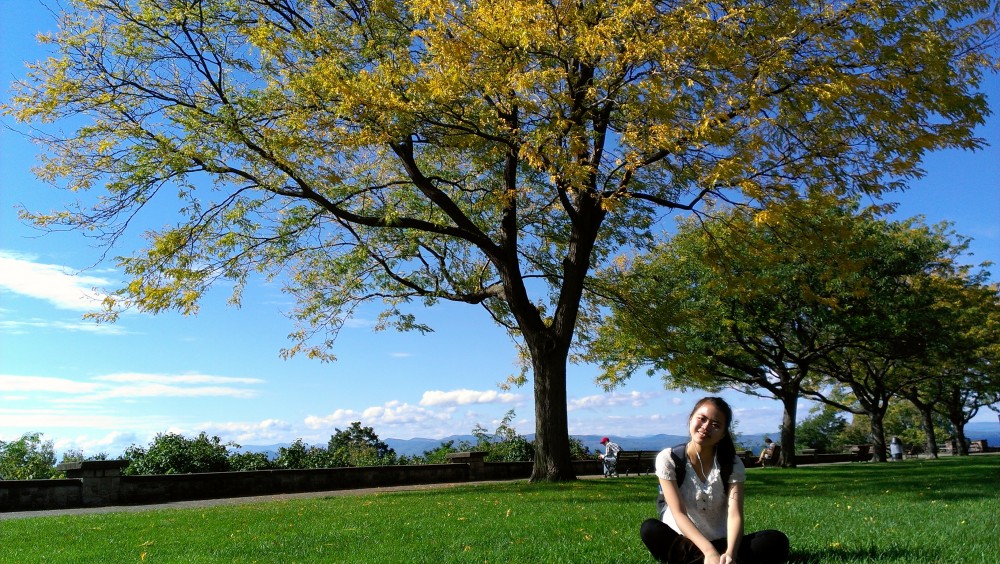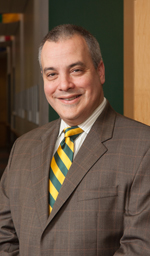Final
Video #2
Video #2
Two Lyndon State College students are curious about what a public college president’s general schedule looks like so they interviewed Lyndon State College’s president, Joe Bertolino, last Tuesday.
Being a college president is not an easy job, which needs to put lots of effort and energy to manage the entire school and he even plays an important role to push the school into a brighter future. Dr. Joe Bertolino began his career as president of Lyndon State College in July 2012, and this year is his second year at Lyndon State.
“I often compare the second year as students’ sophomore year in college,” Bertolino said when he was sitting on a comfortable couch and being interviewed. “People are used to seeing me. ‘It’s Joe.’”
When the freshness wears off, everything is not as exciting as the first year; Bertolino’s schedule stays the same.
“I don’t control my schedule and I can’t make appointments. Darcie does not allow me to do that,” Bertolino said. Darcie Miles is the executive assistant to the president.
Generally, Bertolino’s daily schedule consists of lots of back-to-back meetings. He said that he is not a morning person, and most of his work starts at 9 a.m. When he got this interview on Tuesday afternoon, he has various meetings scheduled before and after it, and then he has personal training at 6 p.m.
“This is actually a light day because I don’t have anything after 7 o’clock,” Bertolino said cheerfully.
Although Bertolino has lots of meetings every day, if the time permits, Bertolino prefers walking around the campus, attending students’ events and saying hi to different folks, offices, and faculties. If he is off campus, he will attend plenty of events, meetings, and speaking to some groups.
Bertolino is usually invited to community events and fundraisers to talk about the college. Mostly, he would talk about the community, the programs the college offers, and why he thinks that Lyndon is a special place.
Once the job gets stressful, he will stop what he is doing and then take a walk around the campus.
“This is a good reminder to me why I am doing what I am doing,” Bertolino said. “Students sometimes don’t realize it, but they actually give me lots of encouragement.”
Bertolino mentioned that he held a hundred events at the President’s House, such as student dinners, dinners with athletes, student leaders and other events last year. For instance, every senior who is going to graduate this December and next year will be invited to the President’s House for dinner before the end of the academic year.
Bertolino said, “I would say being a president of a college is a life-style.”
Final project synopsis
I will do the final project by myself.
My plan is to film the Thanksgiving day how American people would do, their meals, and other outdoor activities. Also, I will do a slideshow for the Chinese people and show how they celebrate the Spring Festival (maybe I will use other ways to show it.)
I think it will be a comparison between American and Chinese culture.
For the text, I will say the history of both festival, how these festivals affect the people, and the traditional culture exchange.
I will do all the things, filming, editing, audio editing, and the text.
Video #2 Synopsis
Julia and I are doing the project with president Joe Bertolino and see how he works in a day.
For the filming part, we are discussing about how he works in a specific day. For the text, we will interview with him and see how he works in general.
Questions we want to ask are: What is his normal schedule? What does he do off campus during the weekdays? What’s his feeling about back-to-back meeting every day? and etc.
The sound would include the interview and natural sound. We haven’t decided whether to use the music or not.
Julia and I will both help each other with this project.
Video #1
Just for fun
Video #1
Two college students took a tour in the Fire Department with an assistant chief in St. Johnsbury, Vermont, Saturday afternoon.
Mark LaRose, an assistant chief working in the Fire Department for over a third of his life, gave Julia and I a tour talking about the Fire Department’s history, facilities, and his personal experience.
The Fire department was established on October 31, 1843, with the first house company called “The Torrent.” The department has processed five separate volunteer companies through the town during several decades. Currently, there are 10 full-time employees and 20 paid on-call fire fighters.
The building has two floors, the top floor has both the working area and the bedrooms, and the bottom floor has three fire trucks. LaRose showed a place with some comfortable sofas and a television where they usually relax and hang out. Normally, they go to work, have lunch in the kitchen, then watching the news on the sofa, and do their daily work.
LaRose showed his room, which is shared with his co-workers. On the wall, several photos present the strong and close relationships between him and his colleagues of thirty years.
“Fire fighters are like brothers,” LaRose said.
When LaRose was pointing to the big and black alarm surrounded by the photos, he mentioned that the alarm brought a loud sound not only in the daytime, but during the night. He also said that he tried to sleep when the alarm rings during the early morning when it isn’t his responsibility. He would like it if the alarm didn’t ring during the entire day.
LaRose then leaded the tour walking down to the first floor and started introducing three different fire trucks, Engine one, Rescue two and the ladder fire truck, also called The Tower.
Engine One contains 12.5 gallons water and Rescue Two has more efficient fire equipment for rescue purposes like vehicle rescue.
I was curious about what fire fighters need to wear on the fire call, so I asked LaRose for the information. He turned to me and asked with a smile on his face, “Do you want to try the uniform on?”
The uniform was too large for me to wear and it was heavy as well. I also put the helmet on and the oxygen bottle on my back. It took a long time for me to put all the equipment on, and finally, I seemed like a real fire fighter with a poorly-fitting uniform.
In addition, before I tried it on, I thought it was easy and convenient for fire fighters to rescue. However, it was beyond my imagination. It was difficult for me to walk and to run. What’s more, it is also hot with it on.
According to this experience, I thought that under a high-stressful, serious and hot situation, fire fighters need to not only wear heavy and uncomfortable uniforms but to protect themselves as well. Also, they try their best to solve the problem and save lives.
“It is our responsibility, and it is our job,” LaRose said.
Video #1 synopsis
In this video project we are going to focus on the Fire Department in St. J.
We are going to start off with what the inside of the department looks like, then talk to the fire fighters about is this what they wanted to be when they grew up (when they were kids).
Also, we are going to ask them for some fire safety tips for college students. And we will end with them giving us some stories of their times in the fire department.
We will say now, that things may change. Because we haven’t gone yet to see them, we may find a better way to end the video project or start it off.
We will be doing the recording with Yolanda’s camera/phone. The paper will probably be done by me. The video will have its own sound from the recording because their will probably be talking in the background, and maybe we will get lucky (although it will be a bad thing if it happens for someone else) the alarm will go off and the trucks will be called out.


![IMG_2378[1]](https://yolandaliang.wordpress.com/wp-content/uploads/2013/11/img_23781.jpg?w=300&h=200)
![IMG_2351[1]](https://yolandaliang.wordpress.com/wp-content/uploads/2013/11/img_23511.jpg?w=300&h=200)
![IMG_2352[1]](https://yolandaliang.wordpress.com/wp-content/uploads/2013/11/img_23521.jpg?w=300&h=200)
![IMG_2368[1]](https://yolandaliang.wordpress.com/wp-content/uploads/2013/11/img_23681.jpg?w=300&h=200)
![IMG_2364[1]](https://yolandaliang.wordpress.com/wp-content/uploads/2013/11/img_23641.jpg?w=300&h=200)